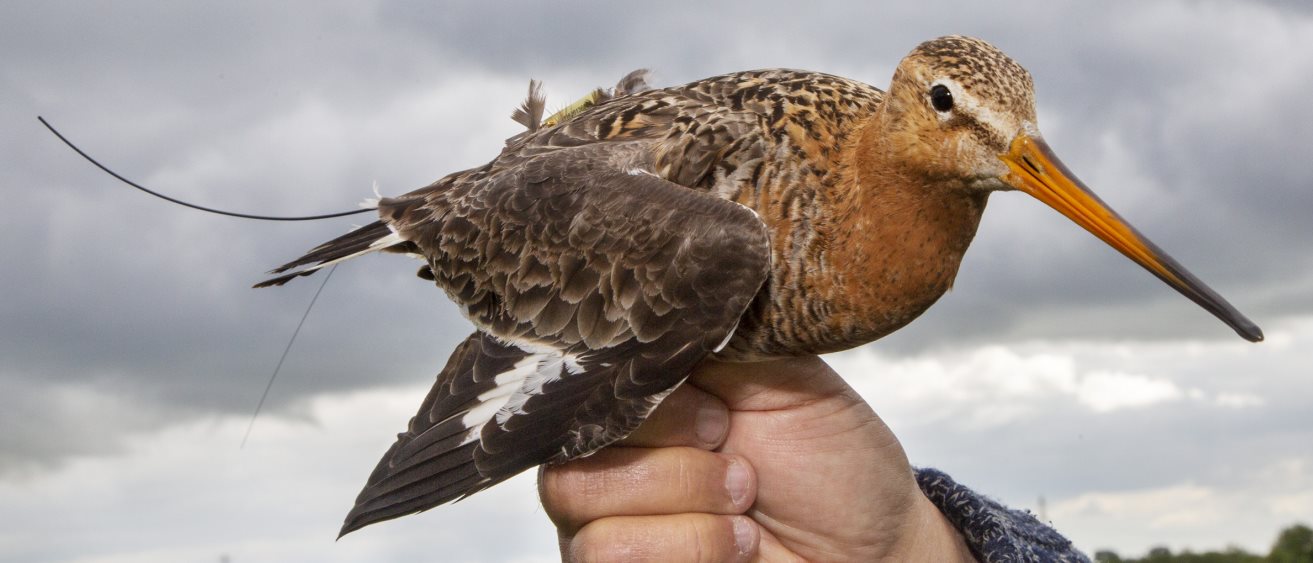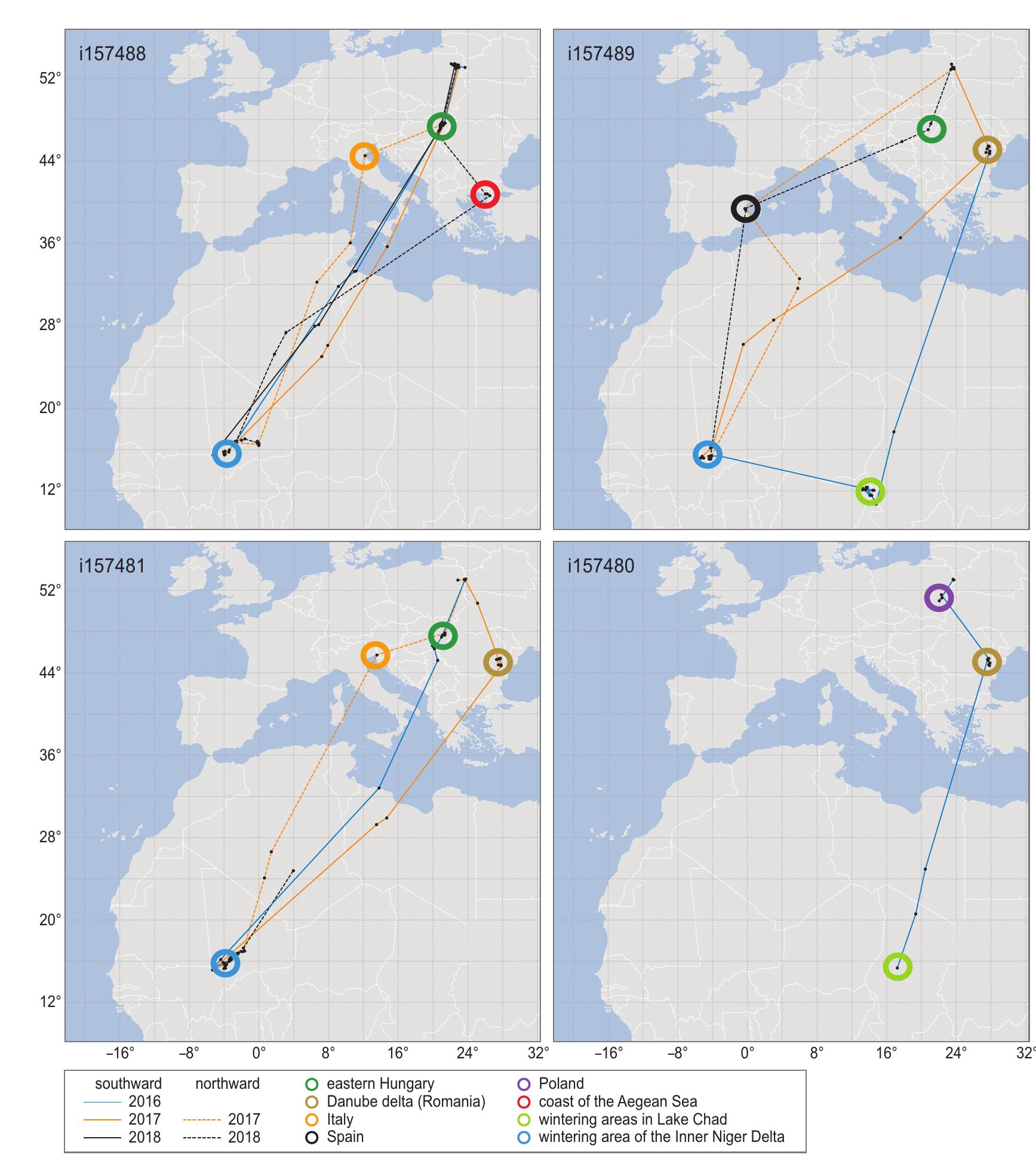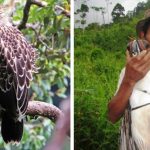← Back
Black-tailed godwits’ different migration behaviours

Migratory birds from a given species are frequently observed to follow the same routes, and do so every year. Tracking different populations with Argos satellite telemetry shows a very different picture for some populations of the black-tailed godwit. Understanding why will need even more tracking.
Black-tailed godwits (Limosa l. limosa) are shorebirds (see also e.g. Oriental Pratincoles: long-distance migrant birds) breeding across much of Northwestern Europe – The Netherlands, Germany, Belgium, Poland. They are migrating long distances, using a number of staging sites during their migration. In winter, they can be found South of Europe (Iberian Peninsula, Greece, Black Sea coast) and also in North and sub-Saharan Africa.
Different migration behaviours from The Netherlands and from Poland
In a previous study, 60 black-tailed godwits were tagged from a dense population in The Netherlands with satellite transmitters. Now four birds from a small population in Poland were tagged with 5-g Argos PTTs. While the two populations are genetically identical, they breed 1200 km apart from each other.
Previous work on the Dutch population revealed large differences between individual black-tailed godwits in the timing of their migration, however individual birds were consistent in their timing between years. Also, individuals were rather consistent in their migratory route, their stopover sites and wintering grounds. In contradiction, the four birds tracked from the relatively small population in Poland left two weeks earlier during southward migration, arrived one month later at the wintering grounds, having done long stopover in Southern Europe before crossing the Mediterranean. In this, they showed the same large variation in timing. The variation in routes was surprisingly high, they used three different routes during southward and northward migration, and the three individuals tracked for more than one migration cycle changed routes from one year to the next.
More info about animal tracking with Argos

MIgratory routes of each of the four black-tailed godwits tagged in Poland. Open circles show stops and wintering areas. (adapted from [Loonstra et al., 2020])
Why Polish black-tailed godwits have different behaviours?
The difference in timing between Polish and Dutch birds for the earlier start could be caused by a difference in nutrient availability at the start or along the way. A poorer habitat-quality could also be in question.
The flexibility in migratory routes observed among the four Polish black-tailed godwits during both southward and northward migration could have arisen from a lack of social interactions. These interactions usually enable birds to choose their migration route with the help of experienced older individuals when they initiate their first migration. As the Polish population is smaller, social information might be lacking, and inexperienced birds could develop more individual routes on their very first migration. If they survive, this mechanism can generate more individual differences in migratory routes every year
The tracked birds being all experienced adult black-tailed godwits, and the migration flock composition being unknown, it is difficult to assess this hypothesis. Life-long monitoring, from birth to death from populations of different densities are necessary to check the implied social conformity hypothesis.
References & links
- Loonstra A.H.J., Verhoeven M.A., Zbyryt A., Schaaf E., Both C. & Piersma T. 2019. Individual Black-tailed Godwits do not stick to single routes: a hypothesis on how low population densities might decrease social conformity. Ardea 107: 251–261. doi:10.5253/arde.v107i3.a11
- Verhoeven M.A., Loonstra A.H.J., Senner N.R., McBride A.D., Both C. & Piersma, T. 2019. Variation from an unknown source: large inter-individual differences in migrating Blacktailed Godwits. Front. Ecol. Evol. 7:31.
- Verhoeven M.A., Loonstra A.H.J., McBride A.D., Both C., Senner N.R. & Piersma, T. 2020. Migration route, stopping sites, and non-breeding destinations of adult Black-tailed Godwits breeding in southwest Fryslân, The Netherlands. J. Ornith. 2020.
- See where all the tagged black-tailed godwits are at the moment: https://www.globalflywaynetwork.org/flyway/east-atlantic-flyway-inland-waders/map
Photo: a black-tailed godwit with an Argos PTT (credit Groningen Institute for Evolutionary Life Sciences)


